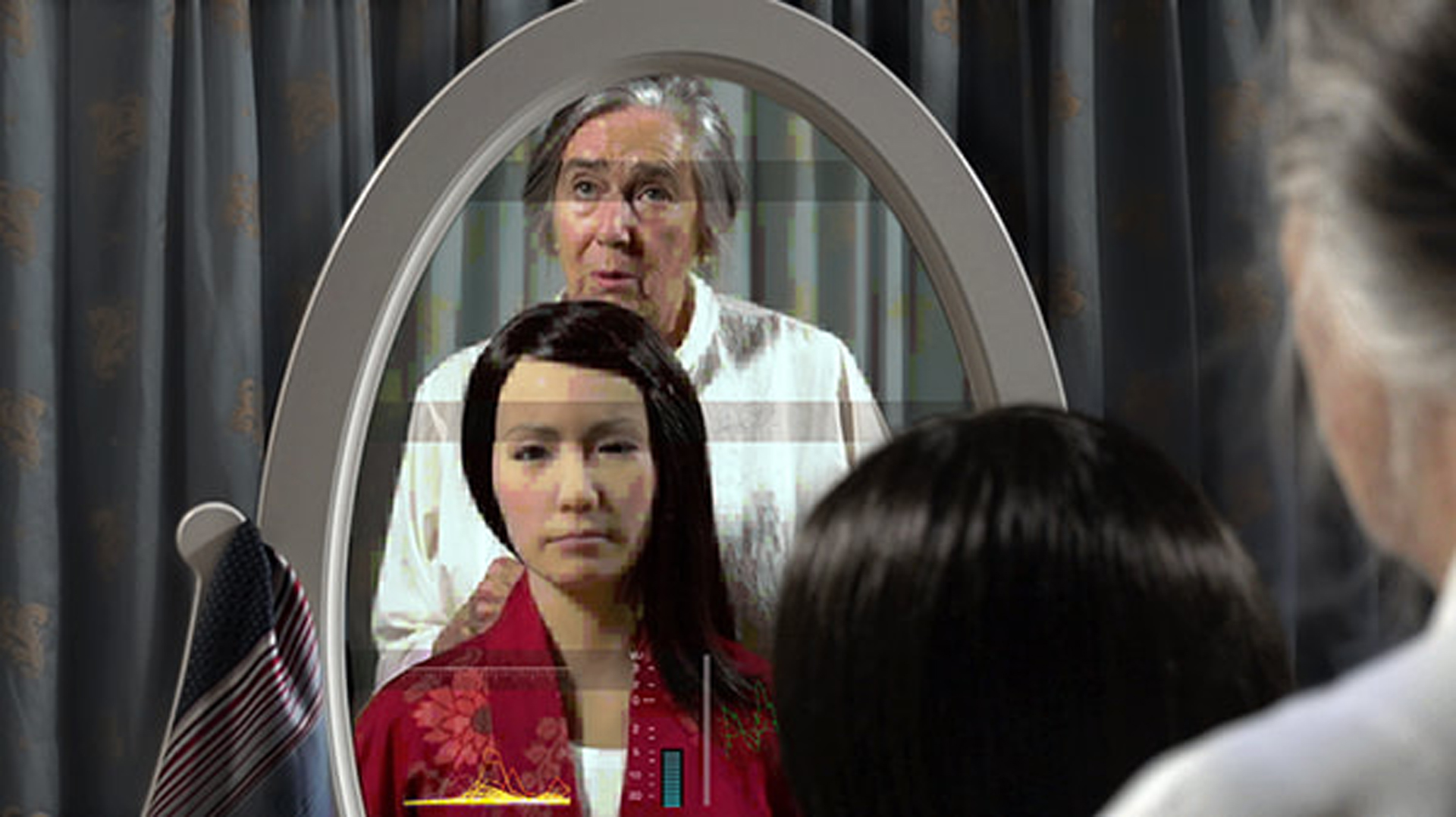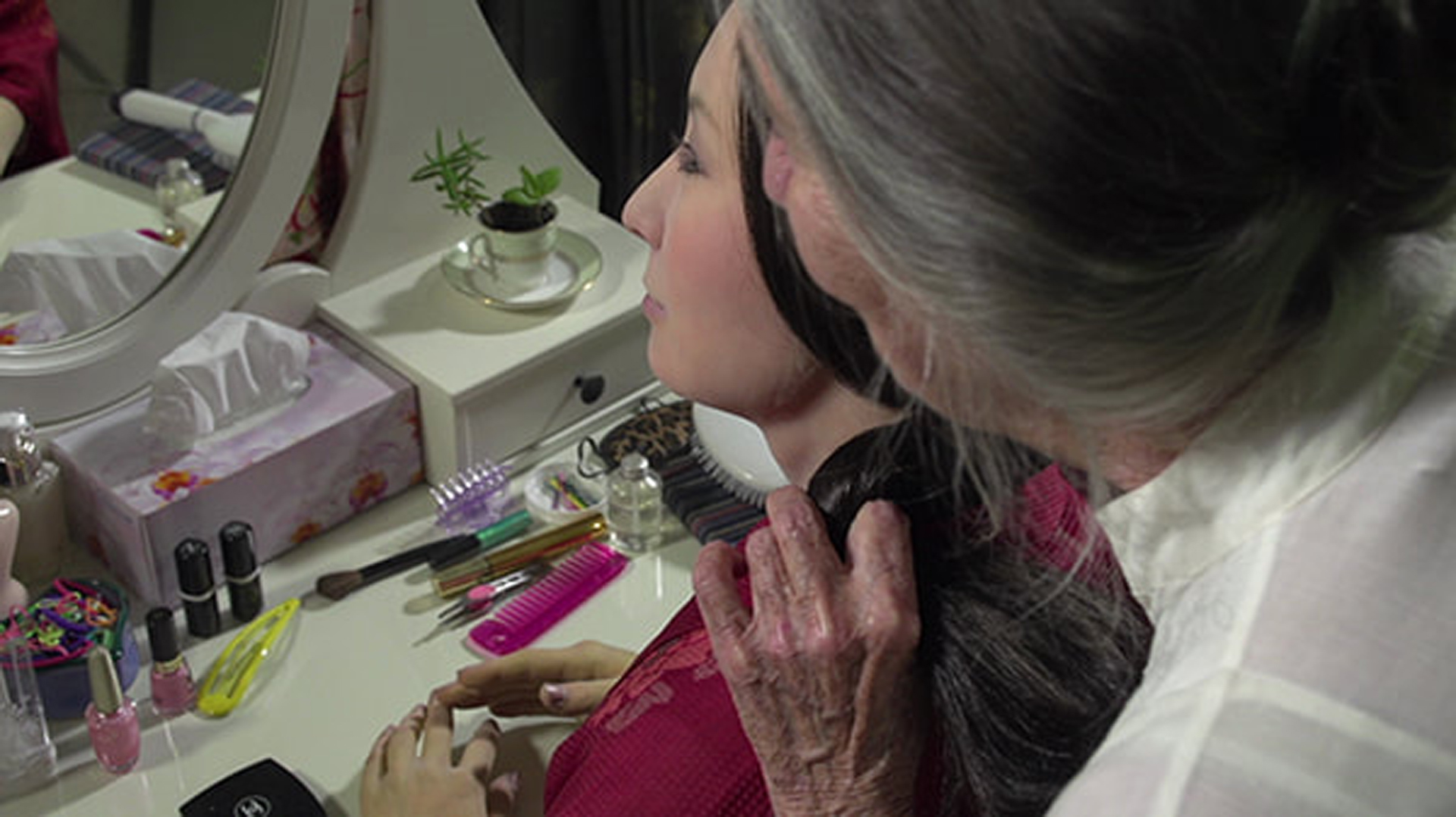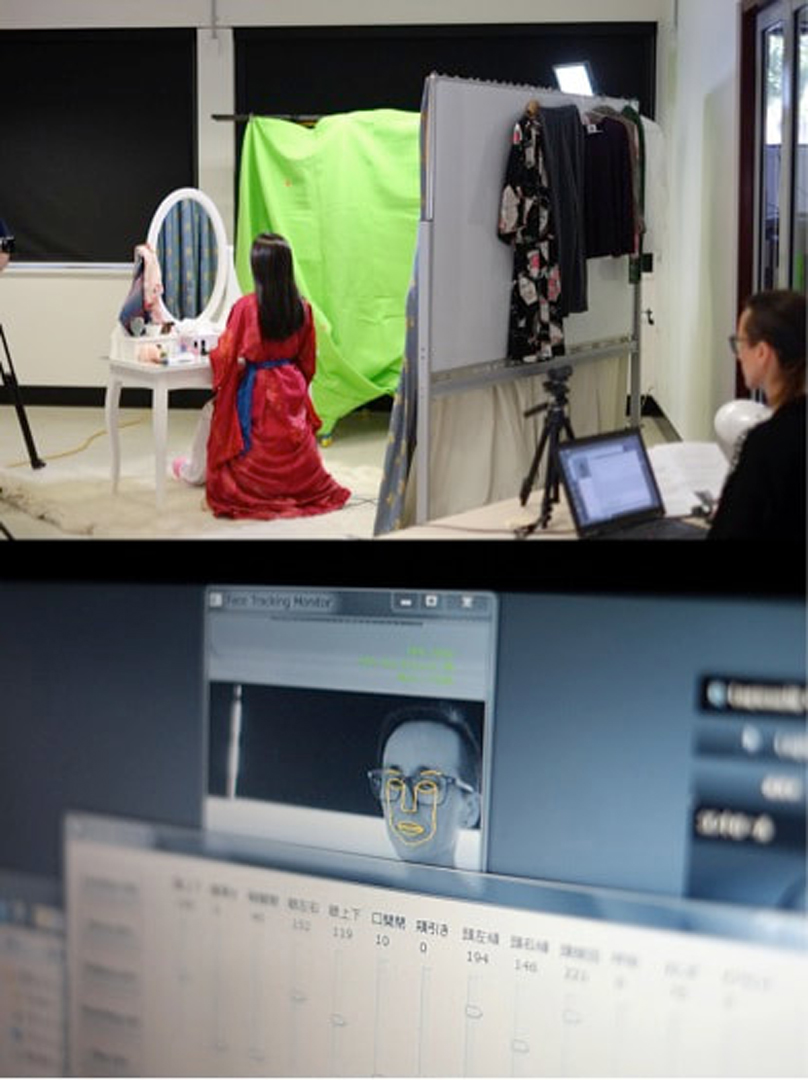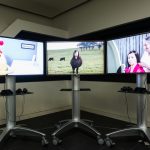“Occupation / Pathetic Fallacy / Lamassu Kentaurosu Wagyu” by Elena Knox
Title:
- Occupation / Pathetic Fallacy / Lamassu Kentaurosu Wagyu
Artist(s) and People Involved:
Exhibiting Artist(s):
Symposium:
- ISEA2016: 22nd International Symposium on Electronic Art
-
More artworks from ISEA2016:


Venue(s):
Creation Year:
- 2014
Medium:
- Single-channel video, stereo sound
Duration:
- 4:17 (continuous loop)
Artist Statement:
Pathetic Fallacy is an intergenerational dialogue about growing old. Youth doesn’t believe it will age. Age believes it knows best. Humans believe in the pathos of humanity. And the cycle continues. The screenplay wraps the empathic notion of kokoro around the subject of aging: aging of humans, of women, of technologies, of matter, of robotic or cyborg assemblages. The piece is a ‘two-hander’ between an elderly woman and a ‘young’ ‘female’ android. A conventional mother-and-daughter or Julietand-Nurse figuration is applied to an unconventional scenario, as the video explores a new familial paradigm. Pathetic Fallacy was the first two-handed dialogue drama created for film/video involving an actroid (see, since, Fukada’s 2015 feature Sayonara). The English term ‘pathetic fallacy’ denotes the ascription of human traits or feelings to inanimate nature. In keeping with this theme, Actroid-F’s simple face-detection and face-tracking software are employed in its acting. This robot cannot currently distinguish between individual faces or ‘decide’ to follow a face; its decisions are made by humans via computer interface. However, it often fools its interlocutors into believing that it can make these determinations. It mimics the human development of empathy via neurobiological mirror-learning: visual emulation in face-to-face situations. Framed as a fantasy, but yet endeavoring to strip back layers of fantasy and futuristic nostalgia, Pathetic Fallacy provides another snapshot of a point-in-time where science fact is not caught up with science fiction, and where speculation and education are based inelegantly upon what is known.
Elaborating a poetics of point-of-view, the actroid and the elderly woman discourse about aging in a dramaturgical möbius loop. Their dialogue comprises their attempting and not attempting to understand each other, and reveals a lack of clarity as to where one entity ends and the other begins. Insensibly entangled in a beatific human–robot mis/understanding, each character relies on what she perceives as empirical evidence to promote her own partial fallacy. Each character also relies on her typecasting with reference to specific cinematic emotions—the maternal fondness of the elder, the smart self-indulgence of the younger—and are unfortunately unable to break these time-honored molds (the gaze of the artist attempts to query, destabilize, break the molding for them). Mirroring the dialogue’s intersubjective mirroring, time is also on a loop in the video, which can seamlessly repeat and repeat; as long as each interlocutor is closed or oblivious to the other’s perspective, the loop remains closed and the questions remain open.
Pathetic Fallacy seeks to make explicit, and relate to technoculture, tensions between generational feminisms and non-feminisms in terms of claims to authenticity. In arguing about aging, even in their gentle, clichéd way, the old woman and the robot in the looping scene perform a claim-staking solipsism present in modern-day feminist discourse. They are both wrong, and they are both right. The gynoid will age, but not as the human elder thinks it will. The gynoid has the overconfidence of the (literal) digital native; the woman the overconfidence of the rational anthropocentric. The ‘child’ in the scenario is the burgeoning intelligence that exists in the mutual space between them, in their intersubjectivity: in the mirror.
Website:
Additional Images:
Category:
All Works by the Artist(s) in This Archive:
- Elena Knox

Occupation / Pathetic Fallacy / Lam...
[ ISEA2016]
Occupation
[ ISEA2016]
Lamassu Kentaurosu Wagyu
[ ISEA2016]
Omikuji
[ ISEA2019]
Beholder
[ ISEA2016]









